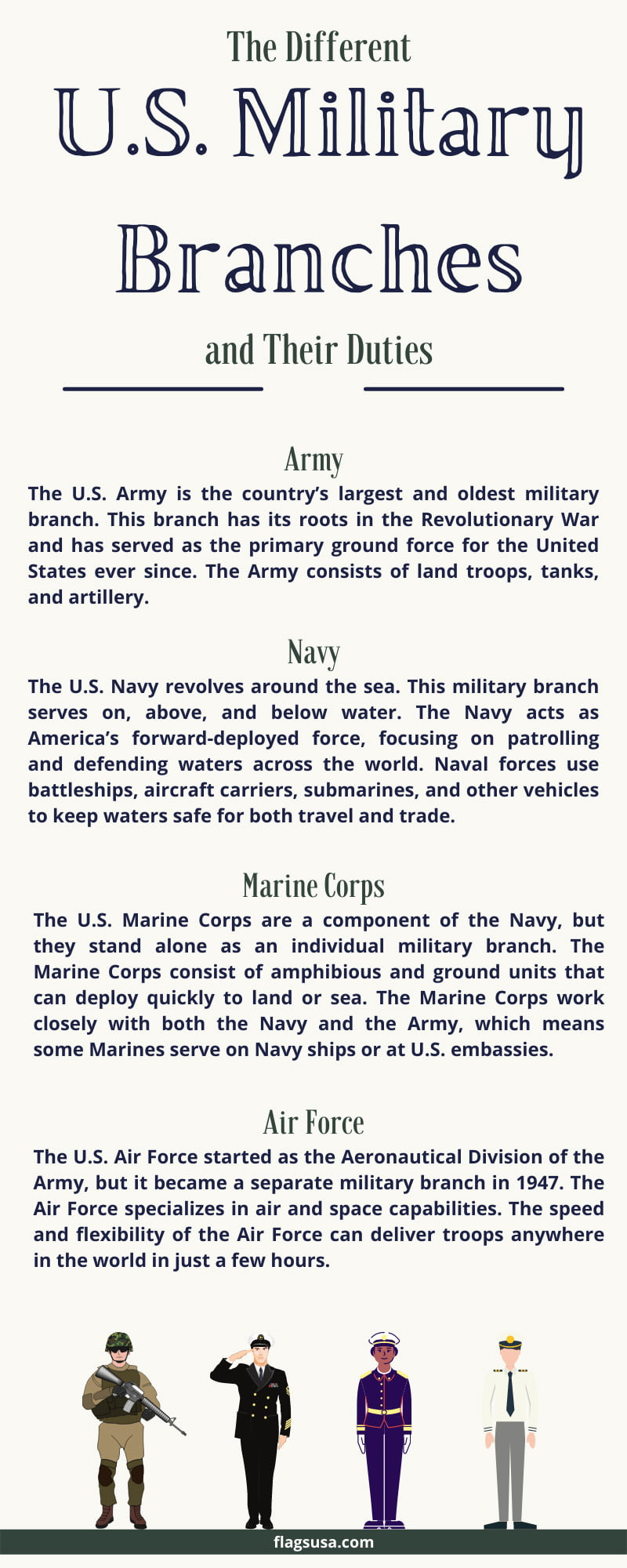Exploring the Different Types of Branches in the Military: A Comprehensive Guide

- Understanding the Different Types of Branches in the Military
- The Major Branches of the Military Explained
- Unique Roles and Responsibilities of Each Military Branch
- How the Different Branches of the Military Work Together
- Career Opportunities Across the Different Military Branches
- Choosing the Right Military Branch: A Comprehensive Guide
Understanding the Different Types of Branches in the Military
The military is a complex organization composed of various branches, each with its unique functions, missions, and structures. Understanding these different branches is essential for anyone interested in military service, defense careers, or simply learning about national security. The primary branches of the U.S. military include the Army, Navy, Air Force, Marine Corps, and Coast Guard, each playing a vital role in safeguarding the nation.
The Army
The U.S. Army is the largest branch and is primarily responsible for land-based military operations. Its mission encompasses a wide range of activities, from combat and peacekeeping to humanitarian assistance. The Army is equipped with a variety of ground vehicles, artillery, and infantry troops, allowing it to engage in both conventional warfare and irregular conflicts. Soldiers in the Army undergo rigorous training to prepare for diverse environments and missions.
The Navy
The U.S. Navy focuses on naval and maritime operations. It is tasked with ensuring freedom of the seas, projecting power from the sea, and conducting anti-submarine warfare. The Navy operates a fleet of ships, submarines, and aircraft that work together to maintain maritime security. Sailors are trained in various specialties, from engineering and logistics to combat operations, making the Navy a versatile force in military strategy.
The Air Force
The U.S. Air Force is responsible for aerial and space operations. Its primary mission is to achieve and maintain air superiority, which is crucial for modern warfare. The Air Force operates advanced aircraft, drones, and satellites, allowing it to conduct surveillance, reconnaissance, and strategic bombing. Airmen are trained to handle complex technologies and are often involved in joint operations with other military branches to enhance overall mission effectiveness.
The Marine Corps
The U.S. Marine Corps is a rapid-reaction force that specializes in amphibious operations. Known for its agility and speed, the Marine Corps can deploy quickly to respond to crises and engage in combat. Marines undergo intense training, emphasizing physical fitness, combat skills, and leadership. Their unique capabilities allow them to operate in diverse environments, from land to sea, making them a critical component of the U.S. military's overall strategy.
The Coast Guard
The U.S. Coast Guard plays a dual role, serving both as a military branch and a federal law enforcement agency. It is responsible for maritime safety, security, and environmental protection. The Coast Guard operates under the Department of Homeland Security during peacetime and can be transferred to the Department of Defense during wartime. Coast Guard personnel are trained in search and rescue, law enforcement, and maritime safety operations, making them essential for protecting the nation's waters.
The Major Branches of the Military Explained
The military is organized into several distinct branches, each with its own specific roles, responsibilities, and areas of expertise. Understanding these branches is essential for grasping how national defense operates and the unique contributions each segment makes to overall military effectiveness. The major branches of the military include the Army, Navy, Air Force, Marine Corps, and Coast Guard, each playing a pivotal role in safeguarding a nation's interests.
The Army
The Army is the largest branch of the military and primarily focuses on land-based operations. Its main mission is to protect and defend the nation against ground threats, ensuring security through a versatile range of combat and support capabilities. The Army is responsible for a variety of tasks, including:
- Ground combat operations
- Logistical support
- Counter-terrorism missions
- Humanitarian assistance
With its extensive range of equipment, from infantry weapons to armored vehicles and helicopters, the Army is equipped to handle diverse combat scenarios and support missions worldwide.
The Navy
The Navy plays a crucial role in maritime security and power projection. This branch operates at sea and is tasked with maintaining freedom of navigation, deterring aggression, and projecting power through naval operations. The Navy's capabilities include:
- Aircraft carriers and naval aviation
- Submarine warfare
- Surface warfare
- Amphibious operations
By deploying ships and submarines, the Navy can respond to threats globally, ensuring that national interests are protected on the high seas.
The Air Force
The Air Force is dedicated to aerial warfare and is responsible for air superiority, intelligence gathering, and strategic bombing. This branch utilizes advanced aircraft and technology to achieve its objectives, which encompass:
- Air defense
- Precision strikes
- Surveillance and reconnaissance
- Transport and logistics support
The Air Force's ability to conduct operations from the air allows for rapid response to threats and enhances the effectiveness of joint operations with other military branches.
The Marine Corps
The Marine Corps is often described as a rapid-reaction force, specializing in amphibious warfare. This branch is known for its ability to deploy quickly and engage in combat operations in diverse environments. Key functions of the Marine Corps include:
- Expeditionary warfare
- Assault operations
- Humanitarian assistance and disaster relief
With a strong emphasis on versatility and readiness, the Marine Corps is typically the first to respond in crises, showcasing its unique capability to operate on land and at sea.
The Coast Guard
The Coast Guard operates under the Department of Homeland Security during peacetime and can be transferred to the Department of Defense during wartime. This branch focuses on maritime law enforcement, search and rescue, and environmental protection. Its key responsibilities include:
- Coastal security
- Drug interdiction
- Immigration enforcement
- Marine environmental protection
The Coast Guard's dual mission of safeguarding the nation's waters and supporting military operations underscores its vital role in both national security and public safety.
Unique Roles and Responsibilities of Each Military Branch
Each branch of the U.S. military has distinct roles and responsibilities tailored to its specific mission and operational needs. Understanding these unique functions is essential for recognizing how the military as a whole operates to protect national security and serve the interests of the nation.
U.S. Army
The U.S. Army is primarily responsible for land-based military operations. Its main focus is on ground combat, which includes a wide array of activities such as infantry, armor, and artillery operations. The Army is tasked with securing and holding territory, conducting offensive and defensive operations, and providing humanitarian assistance during conflicts. In addition, the Army plays a crucial role in peacekeeping missions and stability operations around the globe.
U.S. Navy
The U.S. Navy's primary responsibility is to maintain the freedom of the seas and protect American interests on the water. This branch operates a fleet of ships, submarines, and aircraft, enabling it to project power globally. The Navy's roles include:
- Maritime Security: Ensuring safe passage for commercial shipping and protecting maritime trade routes.
- Power Projection: Conducting offensive operations from the sea to land, including air strikes and amphibious assaults.
- Humanitarian Assistance: Providing disaster relief and medical support during international crises.
U.S. Air Force
The U.S. Air Force is dedicated to aerial and space operations, emphasizing air superiority, global strike capabilities, and intelligence gathering. Its responsibilities include:
- Air Defense: Protecting U.S. airspace and assets from aerial threats.
- Strategic Bombing: Conducting long-range missions to deter or defeat adversaries.
- Reconnaissance: Gathering intelligence through advanced surveillance technologies.
U.S. Marine Corps
The U.S. Marine Corps is known for its rapid response capabilities and serves as a versatile force capable of both land and amphibious operations. Marines are often the first on the scene during crises, conducting initial assaults and securing strategic locations. Their unique responsibilities include:
- Expeditionary Warfare: Conducting operations in diverse environments, often with limited resources.
- Combined Arms Operations: Integrating ground, air, and naval forces to achieve mission objectives.
- Force-in-Readiness: Maintaining a state of readiness for quick deployment to conflict zones.
U.S. Coast Guard
The U.S. Coast Guard operates under the Department of Homeland Security during peacetime but can be transferred to the Department of Defense in wartime. Its unique roles include:
- Search and Rescue: Conducting life-saving missions and assisting distressed vessels.
- Law Enforcement: Enforcing maritime laws, including drug interdiction and immigration control.
- Environmental Protection: Safeguarding marine ecosystems and responding to environmental emergencies.
Understanding the distinct roles and responsibilities of each military branch highlights the collaborative nature of the U.S. armed forces. Each branch brings specialized skills and capabilities to the table, ensuring a comprehensive defense strategy that addresses various threats and challenges.
How the Different Branches of the Military Work Together
The United States military is composed of five primary branches: the Army, Navy, Air Force, Marine Corps, and Coast Guard. Each branch has its unique mission, capabilities, and operational focus, but they all work together to achieve common objectives. This collaboration is essential for national defense, humanitarian efforts, and global stability. Understanding how these branches coordinate their efforts provides insight into the complexity and effectiveness of military operations.
Joint Operations are a fundamental aspect of military collaboration. These operations involve multiple branches working together to accomplish a specific mission. For instance, during a large-scale conflict, the Army may be responsible for ground operations, while the Air Force provides air support and intelligence. The Navy can secure sea lanes and project power from the ocean, and the Marine Corps can execute rapid-response missions. Effective communication and planning are crucial to ensure that all branches operate seamlessly and achieve their objectives.
Interoperability is another critical component of how the military branches work together. This refers to the ability of different military services to operate together effectively. The Department of Defense (DoD) invests in joint training exercises, advanced communication systems, and shared protocols to enhance interoperability. For example, joint exercises like the Rim of the Pacific (RIMPAC) allow forces from various branches to practice coordinated tactics and strategies, ensuring they can support each other in real-world scenarios.
Command Structures are designed to facilitate collaboration among the branches. The Unified Combatant Commands (CCMDs) are responsible for specific geographic areas or functional missions and include representatives from multiple branches. This structure allows for integrated planning and execution of operations. For example, the U.S. Central Command (CENTCOM) oversees operations in the Middle East, bringing together Army, Navy, Air Force, and Marine Corps assets to address regional threats and humanitarian crises.
Finally, Technology and Innovation play a vital role in enhancing cooperation among the military branches. Advances in communication technology, reconnaissance systems, and logistics capabilities allow for real-time information sharing and coordinated responses. The use of joint platforms, such as the F-35 Lightning II, which can be operated by multiple branches, exemplifies how modern military technology fosters collaboration. By leveraging cutting-edge tools and systems, the military can respond more effectively to evolving challenges and threats.
Career Opportunities Across the Different Military Branches
The United States military is comprised of five primary branches: the Army, Navy, Air Force, Marine Corps, and Coast Guard. Each branch offers a diverse range of career opportunities tailored to different interests, skills, and educational backgrounds. Whether you're seeking technical roles, leadership positions, or support services, the military has something to offer everyone.
U.S. Army
The U.S. Army provides a multitude of career paths, including but not limited to:
- Combat Roles: Infantry, Armor, and Special Forces
- Technical Fields: Cybersecurity, Engineering, and Medical Services
- Support Services: Logistics, Administration, and Intelligence
With extensive training and advancement opportunities, the Army prepares individuals for both military and civilian careers.
U.S. Navy
The Navy focuses on maritime operations and offers careers such as:
- Seafaring Roles: Sailors, Submariners, and Aviators
- Technical Positions: Nuclear Engineering, Information Technology, and Aviation Maintenance
- Medical and Support Roles: Hospital Corpsman and Logistics Specialists
Navy personnel often gain valuable skills that are highly sought after in the civilian workforce, particularly in engineering and technology sectors.
U.S. Air Force
The Air Force emphasizes air and space operations, providing careers that include:
- Pilots and Aircrew: Fighter Pilots, Transport Pilots, and Loadmasters
- Technical Careers: Cyber Operations, Intelligence, and Maintenance
- Medical and Support Roles: Aerospace Medicine and Administration
The Air Force also invests heavily in education and training, offering numerous programs for professional development.
U.S. Marine Corps
The Marine Corps is known for its elite combat training and leadership development, with career opportunities that include:
- Infantry and Combat Arms: Marines in various combat roles
- Technical Fields: Aviation Maintenance and Communications
- Logistics and Support: Supply Chain Management and Administration
Marines are often recognized for their leadership skills, making them competitive candidates in civilian job markets.
U.S. Coast Guard
The Coast Guard plays a vital role in maritime safety and security, offering career paths such as:
- Law Enforcement: Maritime Security and Search and Rescue
- Technical Roles: Engineering, Environmental Protection, and Cybersecurity
- Support Services: Administration and Logistics
The Coast Guard is unique in its dual role of military service and law enforcement, providing a distinctive career experience.
With so many diverse career opportunities available, individuals interested in serving their country can find a branch that aligns with their professional aspirations and personal values.
Choosing the Right Military Branch: A Comprehensive Guide
Choosing the right military branch is a crucial decision for anyone considering a career in the armed forces. Each branch offers unique opportunities, experiences, and challenges that can shape your future. Understanding the core missions, values, and benefits of each branch is essential to making an informed choice that aligns with your personal goals and aspirations.
Understanding the Military Branches
The United States military consists of five main branches, each with its distinct focus and operational style:
- Army: The largest branch, primarily responsible for land-based military operations.
- Navy: Focuses on naval and maritime operations, protecting sea lanes and projecting power on the water.
- Air Force: Responsible for aerial and space operations, providing air support and maintaining air superiority.
- Marine Corps: A rapid-response force known for its amphibious operations, often the first on the ground in conflict zones.
- Coast Guard: Primarily focused on maritime safety and security, operating under the Department of Homeland Security in peacetime.
Evaluating Personal Interests and Skills
When choosing a military branch, consider your personal interests, skills, and career goals. For instance, if you have a passion for technology and aviation, the Air Force may be a better fit. Alternatively, if you thrive in high-pressure environments and enjoy physical challenges, the Marine Corps might be more appealing. Reflect on your strengths and how they align with the various roles available in each branch.
Considering Commitment and Lifestyle
Each military branch has different commitment levels and lifestyle expectations. The Army, for example, often requires longer deployments, while the Navy may offer extended periods at sea. It's essential to understand the typical lifestyle associated with each branch, including training, deployment cycles, and daily routines. This knowledge will help you gauge how well each branch fits into your long-term life plans.
Benefits and Opportunities
Each military branch offers various benefits, including education, healthcare, and career advancement opportunities. Researching these benefits can provide insight into what you can expect in terms of support for your personal and professional development. For example, the Army offers the GI Bill for education, while the Navy provides extensive technical training in various fields. Understanding these benefits can play a significant role in your decision-making process.

You liked this publication Exploring the Different Types of Branches in the Military: A Comprehensive Guide See more here General.
